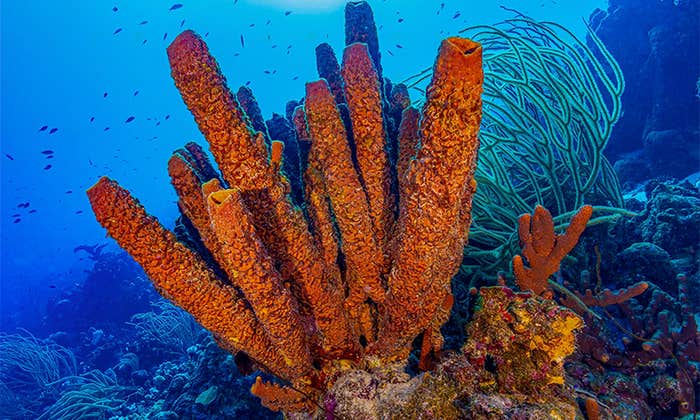We’re not the man we used to be. Over the last 20 years, genomics, ancient DNA, and paleoanthropology have joined forces to completely overhaul our understanding of the origin of our species. The true diversity and complexity of human evolution over the last few hundred millennia surpasses even the most unhinged imaginings we might have hazarded just a short generation ago. But greater clarity has left us with a messier and less elegant narrative. Our species’ status, it turns out, is “complicated.”
In the year 2000, the orthodoxy was that humans spread across the world 60,000 years ago, and were descended exclusively from a small population in Africa. Neanderthals and various other human groups (and yes, we didn’t even deign to give them all names) were evolutionary “dead ends.” Of interest mostly to scholars, they were dismissed as failed experiments in a world our ancestors won. Today, this tidy story of us no longer passes a basic fact check.
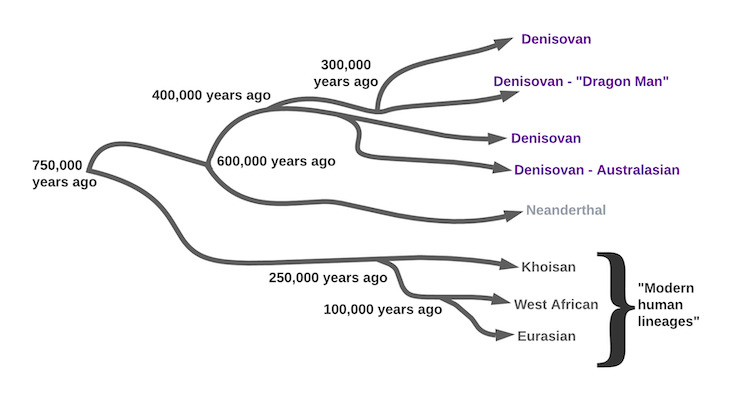
In 2010, genomes recovered from ancient remains of “archaic hominins” in Eurasia1 turned out to have genetic matches in many modern humans.2 It seems they weren’t quite as “archaic” as we thought. In addition, we had to get used to the new reality that a solid 2 to 3 percent of the ancestry of all humans outside Africa is Neanderthal. About 5 percent of the ancestry of Melanesian groups, like the Papuans of New Guinea, actually comes from a previously unimagined new human lineage discovered in Denisova Cave, in Siberia of all places.
Since these first major overhauls, the genetic picture has only grown more complex. Trace, but detectable (0.2 percent or so), levels of “Denisovan” ancestry are found across South, Southeast, and East Asia (as well as among indigenous people of the Americas).3 Similarly, trace but detectable levels of Neanderthal ancestry actually appear in most African populations.4 And, though we have no ancient genomes to make the triumphant ID, a great deal of circumstantial DNA evidence indicates that many African groups harbor silent “archaic” lineages equivalent to Neanderthals and Denisovans.5 We call them “ghost” populations.6 We know they’re there in the genomes, but we have no fossils to identify them with.
Even the canonical “Out of Africa” migration7 itself has turned out to be less neat and tidy than we thought. Outside Africa, whether you are an indigenous Australian, Amazonian native or a German burgher, fully 90 to 99 percent of your ancestry derives from a single ancestral human population pulse 60,000 years ago. Somehow, an isolated African tribe of 1,000 to 10,000 people, who became genetically homogenous due to their initial small population size, swept across Eurasia.8 By 50,000 years ago, they reached Australia. They had replaced the last Neanderthals and Denisovans by 40,000 years ago, if not earlier. They even migrated to North and South America 15,000 years ago.9
But inside of Africa, the story is much richer and still not fully grasped.10 Many African populations started separating from each other 200,000 years ago, becoming distinct lineages such as Khoisan and West Africans. The emergence of modern humans within the continent was not an explosion, but a gradual evolution of interacting lineages. A slow burn.11 The ancestors of modern non-Africans were part of this dance, but were isolated at some point for tens of thousands of years, passing through the “great bottleneck.” Where? When? Who knows? We can’t be sure at this point. Best to just come out and admit it: This chapter of the story is still provisional.

It’s raining men
And now, one after another, new dramatis personae, mostly ghosts, keep entering stage left, complicating what once seemed our simple soliloquy. In The New York Times, Carl Zimmer reports on a very well-preserved fossil: “Discovery of ‘Dragon Man’ Skull in China May Add Species to Human Family Tree.”12 Meanwhile, an Israeli group has a paper out in Science on a human population discovered there which seems to resemble Neanderthals and dates to 120,000 to 140,000 years ago. “Dragon Man” is at least 140,000 years old, and it is a very well preserved skull which exhibits a mixture of “primitive” and “modern” features.

Because these are brand new finds, there is not yet consensus about these fossils. Some researchers want to call “Dragon Man” Homo longi (pronounced lóng, being Chinese for dragon), a new human species, and assert its features mean it is more closely related to modern humans than Neanderthals.
Paleoanthropologists outside of China seem more inclined to believe that “Dragon Man” is actually the paradigm-busting species we have only known definitively from genomics: Denisovans. This faction points out that “Dragon Man” had massive teeth, just like a confirmed Denisovan jaw discovered in Tibet in 2019 (ancient-protein analysis indicated it was Denisovan).13 So why do others disagree? Because the skull is so intact they performed an evolutionary analysis of its relationships, using a full suite of characteristics (unfortunately the find did not yield DNA). On that inferred family tree, Homo longi lies closer to modern humans. In contrast, we know from genomics that Denisovans are more closely related to Neanderthals than they are to modern humans.
My bet is that Homo longi and Denisovans are one and the same. Or, more precisely, Homo longi is one of the many Denisovan lineages. Obviously, the researchers who did the phylogenetic analysis know what they’re saying when they assert that this species mixes modern and archaic features, but physical characteristics are less informative of a lineage’s relationships than DNA is. There are several reasons for this. First, tens of millions of variable markers in human genomes can be used as comparison points for relationships.14 Physical characteristics are usually limited to hundreds of measurable phenotypic traits (how many ways can you define skull shape or the size of teeth?). Second, unlike assessed physical characteristics, DNA has zero subjective bias. A genomic position is A, C, G or T. How many physical characteristics are you going to define? How are you going to slice and dice skull shape? Modern imaging means that these are objective measures, but humans still decide what to measure.
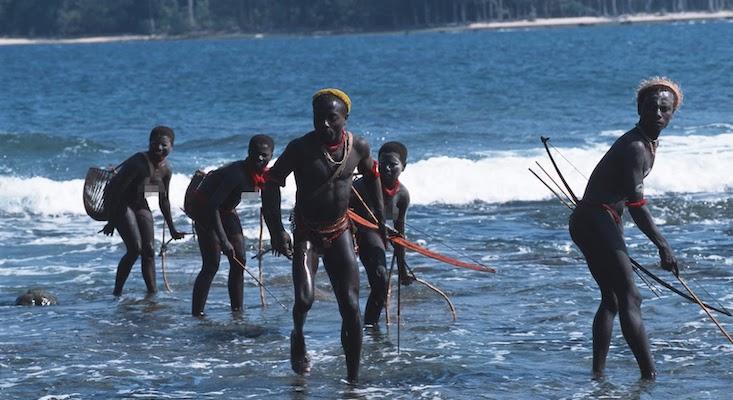
Finally, and more importantly, physical characteristics are subject to natural selection.15 Two populations which look similar can be quite genetically different because adaptation drives convergence, from different starting points, toward similar optimized external characteristics. More concretely in this case, I believe that Neanderthals adapted very well to the cold climate of North Eurasia, and evolved away from many ancestral human characteristics that we now code as “modern.”16 Yes, I’m saying modern humans are quite possibly more “primitive” than our long-lost cousins. This Denisovan population and modern humans probably resemble a general ancestral variety, while the Neanderthals were hyper-specialized in their adaptations, an exemplar of evolution in overdrive.
What about the find in Israel? The discoverers of the Nesha Ramla Homo also want to call it a new species, albeit one close to Neanderthals. But the fact of whether it is a new species or not is mostly academic to me. What I find much more exciting is the fact that these people seem to be quite different from modern humans, but simultaneously have tool technology that was undeniably quite advanced. From the remains at their sites, Nesha Ramla Homo was a hunter of large and small game and maintained fires fueled by wood. There were clearly cultural interactions between these humans and Africans to the south, and Neanderthals to the north.
The “Out of Africa“ narrative of circa 2000 presented our own lineage as a superhuman race, the apotheosis of human evolution. The telos of 2 million years of encephalization, as human brains got bigger and bigger. The latest results do not fit easily into our old hero narrative. Neanderthals win the contest for largest human brains. And “Dragon Man” turns out to have had a very large brain too, in line with modern cranial capacities. All human lineages were getting bigger-brained over the last few million years, not just the lineage that led up to us.
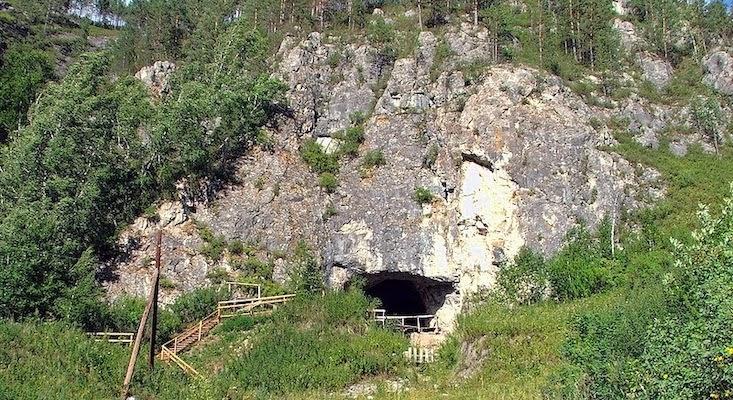
The Denisovans were many
Finally, we need to acknowledge that our long-standing and intimate interest in Neanderthals may have misled us when it came to Denisovans. Neanderthals were discovered in Europe, the continent with the longest and most well-funded tradition in archaeology. But it turns out they may not be typical “archaic” humans. The best genetic work indicates that Denisovans were not one homogeneous lineage, as seems to have been the case with Neanderthals, but a diverse group that were strikingly differentiated.17 The Denisovan ancestry in modern populations varies considerably in relatedness to the genome sequences from Denisova Cave. It is clear that the Denisovan ancestry in Papuans is very different from the Siberian Denisovan sequences. The most geographically distant Denisovan groups, those in Siberia and those from on the far edge of Southeast Asia into Wallacea, were likely far more genetically different from each other than Khoisan are from the rest of humanity. Depending on the assumptions you set your “molecular clock” with, the most distant Denisovan lineages probably separated into distinct populations from each other 200,000 to 400,000 years before their extinction.
Instead of thinking of three major human species 60,000 years ago, perhaps we need to think of two families of related but heterogeneous populations (“modern humans” and Denisovan humans) and one homogeneous one (Neanderthals). Denisovan humans were clearly more closely related to Neanderthals than they were to modern humans. Their common ancestors left Africa 600,000 to 750,000 years ago, and they separated into western (Neanderthal) and eastern (Denisovan) branches. But the evolutionary history of Denisovans may share more commonalities with our African ancestors than with their Neanderthal cousins, who occupied a much more constrained and forbidding ecology across the northwestern ecozone of the continent. While the Pleistocene was cold and brutal across the world, East Asia afforded more opportunities for Denisovans to retreat southward into refuges than West Eurasia did for Neanderthals,18 which was separated from African escapes by the Mediterranean and harsh deserts. Neanderthals approached extinction several times for this reason, while Denisovans maintained many different and diverse lineages down to the last 100,000 years.
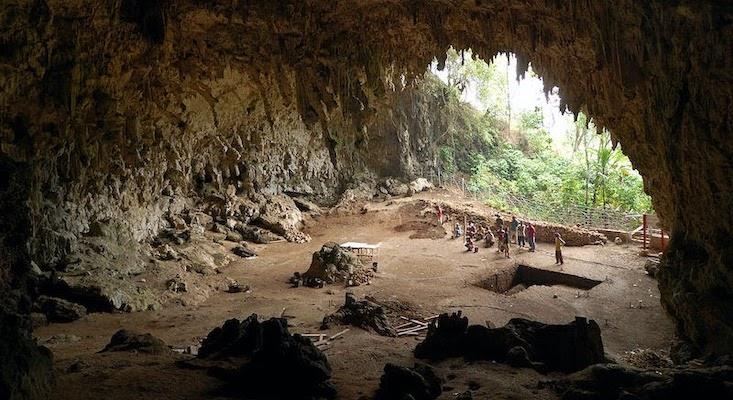
But wait, there are more!
Neanderthals, Denisovans, and modern humans are just the main actors in the plotline of our species’ recent origins. Today on our planet there is just one human species, but this is an exceptional moment. For most of the past few million years there were many human species. Up until 50,000 years ago in the Southeast Asian islands of Flores and Luzon, we see strong evidence of very specialized species of small humans, the pygmy Hobbits and Homo luzonensis. They are different not only from each other, but from modern humans, Denisovans, and Neanderthals. In Africa, there were almost certainly very different human populations which over time were absorbed, just as the Denisovans and Neanderthals were. Homo naledi in South Africa almost certainly persisted down to the period of the rise of modern humans on the continent, 200,000 years ago.
Finally, a great deal of circumstantial archaeological and genetic evidence is accumulating that some earlier African lineages related to modern humans expanded out into eastern Eurasia before our own expansion. Artifacts in China19 and Sumatra20 dating to before 60,000 years ago seem suspiciously modern, and genetic analysis of Siberian Neanderthals dating to 120,000 years ago suggests admixture from populations related to modern humans. It is still possible that Homo longi descends from one of these early populations. Only DNA can establish this for a fact, but most older fossil remains do not yield genetic material, and this skull is old enough that only perfect conditions would have yielded DNA.
The branches we pruned
Genetically, we’re a relatively homogeneous mammalian species, which underwent a rapid expansion from a small ancestral population. This is particularly true outside of Africa. All non-Africans share ancestry that dates back to a single tiny human population of 1,000 to 10,000 people which flourished 60,000 years ago, and exploded across Eurasia and Australia in a single sweep. Within Africa, there is more complex structure and diversity than on the rest of the planet combined, but even there, many of the deep differences are attributable to the great distinctness of the remnant hunter-gatherer populations21: the Khoisan Bushmen, Hadza, and Pygmies of the rainforest. African agriculturalists have undergone rapid expansions from small founding groups, though the bottlenecks there were much less constrictive than for non-Africans.
Our planet was very different 100,000 years ago, and if we could survey that time, we would be astounded by the human diversity across its surface. To enumerate what little we know with certainty, there were at a minimum: modern humans, Neanderthals, at least three to four varieties of Denisovans, and two pygmy Homo populations in Southeast Asia. Likely there were still remnant Homo erectus in Southeast Asia as well, and other diverged lineages within Africa, and a new Homo in Nesher Ramla, Israel, in the Middle East with affinities to Neanderthals.
The first 20 years of this century have been the most exciting decades of paleoanthropology since the emergence of the field, in large part due to the rise of paleogenetics. I see no reason to assume that wave has crested. I for one, can’t wait to continue constantly updating my priors on humankind as the 2020’s unfold.
Razib Khan is a population geneticist. Follow him on Twitter @razibkhan.
This article was originally published on Razib Khan’s Substack, Unsupervised Learning, and is reprinted with permission.
Lead image: IR Stone / Shutterstock
References
1. Reich, D., et al. Genetic history of an archaic hominin group from Denisova Cave in Siberia. Nature 468, 1053-1060 (2010).
2. Thompson, L. Complete Neanderthal genome sequenced. NIH News (2010).
3. Jacobs, G.S., et al. Multiple deeply divergent Denisovan ancestries in Papuans. Cell 177, 1010-1021 (2019).
4. Price, M. Africans carry surprising amount of Neanderthal DNA. Science (2020).
5. Durvasula, A. & Sankararaman, S. Recovering signals of ghost archaic introgression in African populations. Science Advances 6, eaax5097 (2020).
6. Gibbons, A. Mysterious “ghost” populations had multiple trysts with human ancestors. Science (2020).
7. Cann, R.L., Stoneking, M., & WIlson, A.C. Mitochondrial DNA and human evolution. Nature 325, 31-36 (1987).
8. Henn, B.M., Cavalli-Sfrza, L.L., & Feldman, M.W. The great human expansion. Proceedings of the National Academy of the Sciences 109, 17758-17764 (2012).
9. Reich, D., et al. reconstructing Native American population history. Nature 488, 370-374 (2012).
10. Schlebusch, C.M. & Jakobsson, M. Tales of human migration, admixture, and selection in Africa. Annual Review of Genomics and Human Genetics 19, 405-428 (2018).
11. Scerri, E.M., Chikhim L., & Thomas, M.G. Beyond multiregional and simple out-of-Africa models of human evolution. Nature Ecology & Evolution 3, 1370-1372 (2019).
12. Zimmer, C. Discovery of “dragon man” skull in China may add species to human family tree. The New York Times (2021).
13. Chen, F., et al. A late middle Pleistocene Denisovan mandible from the Tibetan Plateau. Nature 569, 409-412 (2019).
14. The 1000 Genomes Project Consortium. A global reference for human genetic variation. Nature 526, 68-74 (2015).
15. Deng, L. & Xu, S. Adaptation of human skin color in various populations. Hereditas 155 (2018).
16. Wroe, S., et al. Computer simulations show that Neanderthal facial morphology represents adaptation to cold and high energy demands, but not heavy biting. Proceedings of the Royal Society B 285 (2018).
17. Browning, S.R., Browning, B.L., Zhou, Y., Tucci, S., & Akey, J.M. Analysis of human sequence data reveals two pulses of archaic Denisovian admixture. Cell 173, 53-61 (2018).
18. Song, W., et al. Multiple refugia from penultimate glaciations in East Asia demonstrated by phylogeography and ecological modelling of an insect pest. BMC Evolutionary Biology 18, 152 (2018).
19. Curnoe, D., Ji, X., Tacon, P.S.C., & Yaozheng, G. Possible signatures of hominin hybridization from the early Holocene of Southwest China. Science Reports 5, 12408 (2015).
20. Westaway, K.E., et al. An early modern human presence in Sumatra 73,000-63,000 years ago. Nature 548, 322-325 (2017).
21. Callaway, E. Ancient African genomes offer glimpse into early human history. Nature (2020).
























